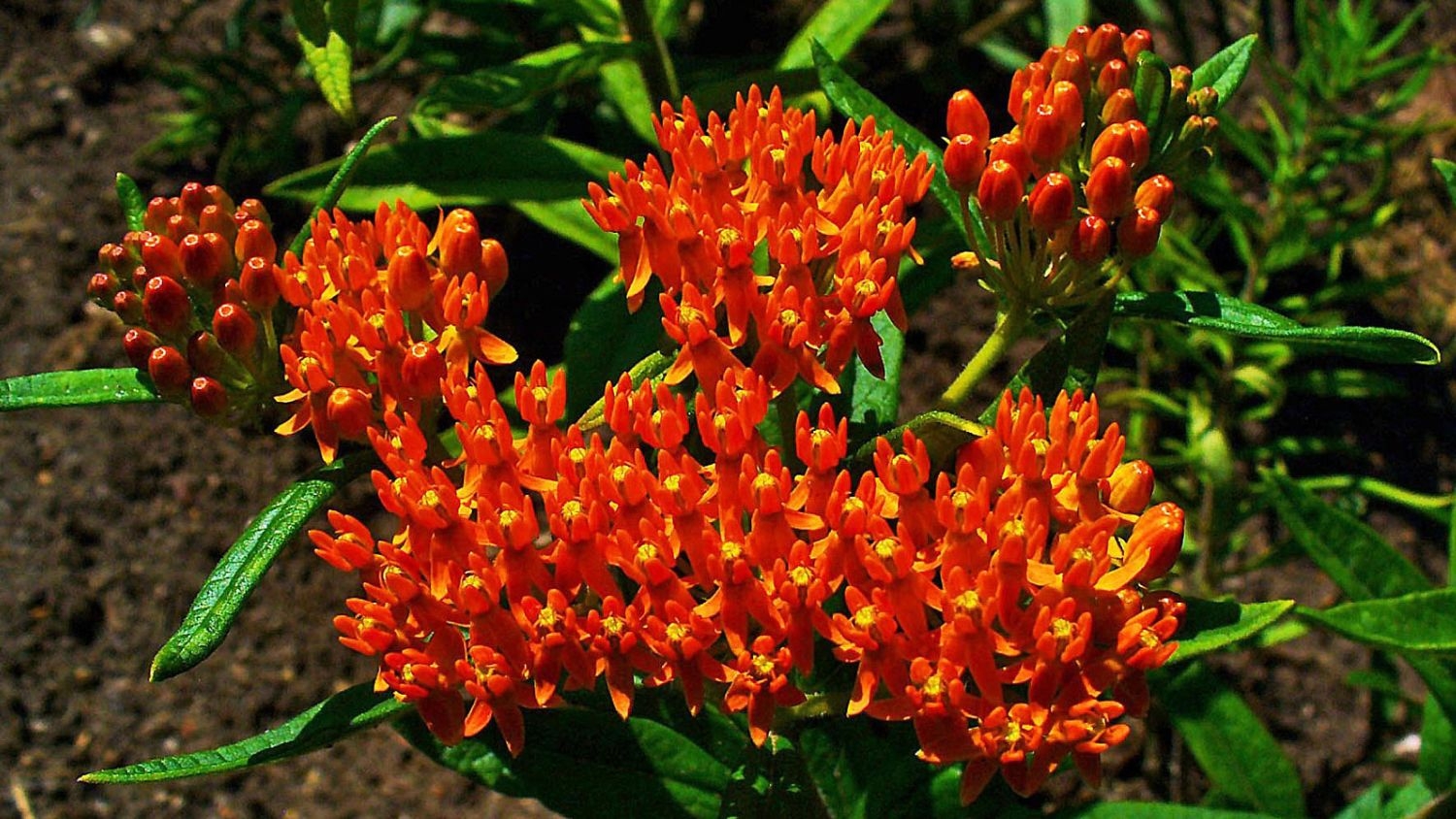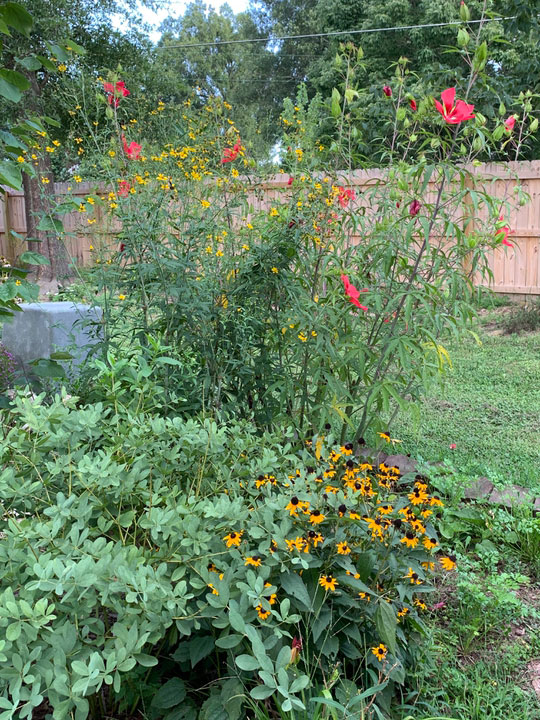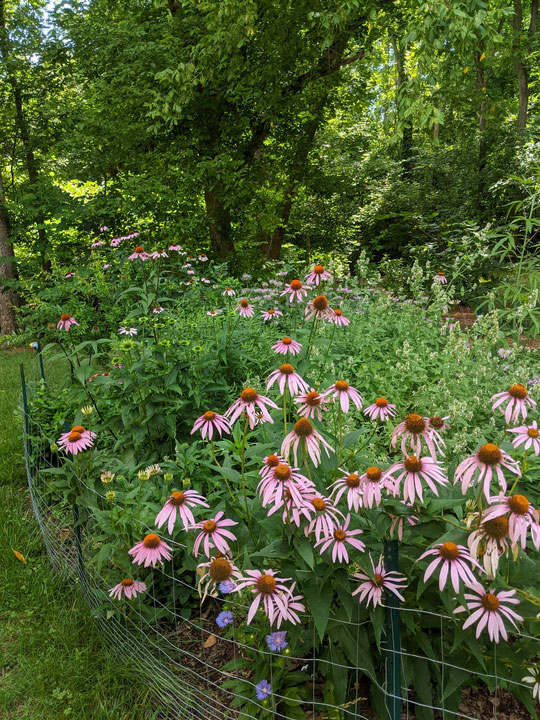3 Reasons To Add Native Plants to Your Landscape

Adding native plants to your landscape can liven it up — literally.
If you do it right, pollinators, songbirds and nature-deficient humans nearby will beat a path to your yard, says Charlotte Glen, native plants expert and program manager for the NC State Extension Master GardenerSM program.
“I think the most unique benefit with native plants is their connection to our whole ecosystem and everything that lives in it,” she says.
Glen, who holds a doctorate in extension education, says a fascination with native plants inspired her career choice. She’s the author of the “Native Plants” chapter in the Extension Gardener Handbook, which is used statewide to teach Extension Master Gardener volunteers and plant lovers who are eager to learn more.
Here are the top three reasons she recommends choosing native plants for your yard and garden.

They Help Pollinators
Native plants are good news for hardworking pollinators, Glen says.
“We have over 500 species of bees native to North Carolina alone. Many of them are adapted to feed on native plants.”
Butterflies, which also help pollinate flowering plants, are drawn to native plants throughout the life cycle, Glen adds.
“Many of the caterpillars, which are the butterflies’ immature stage, are specialized feeders and can only survive on specific plants,” she says. “Probably the best-known example of that is the monarch butterfly, which has inspired campaigns to create monarch habitat by planting Asclepias species, also known as milkweed or butterfly weed.”

They Attract Songbirds
Aside from butterflies, why would you want caterpillars in your yard?
“A lot of people really enjoy observing songbirds in their landscapes,” Glen says. “Caterpillars and other insects are critical to their reproduction because that’s what they feed their baby birds or nestlings.”
In fact, research shows that it takes a staggering amount of food to raise baby birds.
“I wrote down the figure from a study of chickadees and it took 6,000 to 10,000 caterpillars to raise one nest of chickadees,” Glen says. “And I’ve seen similar numbers for bluebirds. So you don’t need to worry about caterpillars devouring your plants if your landscape provides habitat for birds.”
They Can Lift Your Mood
Native plants can provide a nurturing environment for all of the creatures in the ecosystem, including humans, Glen says.
Many studies have documented the mood-lifting power of spending time outdoors, both in nature and in green spaces like parks and gardens — a boost for mental health and overall well-being.
“Just being around plants can reduce anxiety and reduce stress,” Glen says. “And then starting to observe those interactions, to see the butterflies, to see the birds, to see the insects, learning about it creates such a strong connection with nature and with what’s happening right in your backyard, it is a really enriching experience.”
Plotting Your Next Steps
It’s a good idea to begin with small changes to your landscape. Glen offers the following advice on getting started:
First, take inventory of the plants in your landscape. “If you need help identifying the plants, you can always contact your local N.C. Cooperative Extension center. You can take some pictures or bring in some samples and work with an agent or Extension Master Gardener volunteers to understand what you have to start with.”
Just follow the flowers. To simplify your work, look for gaps in the growing season when blooms are scarce. “At a basic level, you can just observe. What time of the year is nothing blooming or do I not have a lot of blooms? A huge part of supporting pollinators is having things in flower all throughout the growing season, and some of our native pollinators are active as early as February and March on warm days.”
Think in terms of vertical layers. Make sure you have plants at a variety of heights, from ground cover to treetops level, for wildlife habitat. “With insects and birds, all the different species have a preferred height from the ground where their prime habitat is. I still remember a lecture on creating nesting habitat for birds where I learned that most birds nest between five and 15 feet above the ground.”
Build up to creating a specific habitat area, such as a pollinator garden in a flowerbed.
Consider taking classes or consulting the resources listed below for more information on gardening with native plants in North Carolina.
Resources
- Native plant profiles on the Extension Gardener Plant Toolbox
- Extension Gardener Plant Toolbox – Find a Plant
- Wildlife Friendly Landscapes
- Extension Gardener Handbook Chapter 12: Native Plants
- Extension Gardener courses
- Contact your N.C. Cooperative Extension county center to learn about local upcoming classes
This post was originally published in College of Agriculture and Life Sciences News.
- Categories: